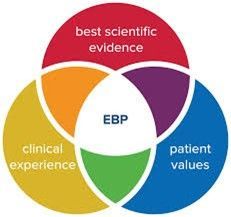Root Cause Analysis in Behavioral Health Organizations
Root cause analysis can benefit organizations wanting to remove obstacles and avoid making the same mistakes repeatedly.

Root cause analysis is an invaluable tool widely utilized in scientific and engineering realms, specifically designed to identify the underlying causes of faults or issues that may arise. By adopting a proactive approach, you, as a professional in a Behavioral Health Organization, play a crucial role in effectively investigating the reasons behind specific incidents or challenges through a structured series of steps. This process helps you understand the factors that led to the issue and enables you to take actionable steps to prevent similar occurrences in the future. Behavioral health organizations can apply this methodology to enhance quality improvement efforts, refine clinical operations—such as crucial suicide prevention strategies—and strengthen their leadership functions.
One effective root cause analysis method is the "Six Ps" framework, introduced by Dr. Anthony Weiss in an article focusing on quality improvement. This approach encompasses six key dimensions: 1) **Patient-related factors,** which explore individual circumstances influencing patient care; 2) **Personnel or staff-related factors,** which assess the impact of staff dynamics and capabilities; 3) **Policies,** the formal guidelines that shape organizational processes; 4) **Procedures,** the specific clinical practices that influence outcomes; 5) **Place or environmental factors,** examining the physical or situational context; and 6) **Political or outside/institutional factors,** considering the broader setting in which the organization operates. By thoroughly evaluating these components, behavioral health organizations can enhance clinical processes and improve patient outcomes.
Another constructive approach involves a systematic five-step process for root cause analysis: 1) Define the problem, articulating the specific issue clearly; 2) Collect data, gathering relevant information for insight; 3) Identify possible causal factors, exploring all potential contributors to the problem; 4) Identify the root cause(s), narrowing down to the most crucial underlying issues; and 5) Recommend solutions, proposing actionable strategies for resolution. For example, if a behavioral health organization notices a trend of increased psychiatric hospitalizations among clients, it would first define the problem as hospitalizations. The data collection phase would involve analyzing various factors, including duration of stays, demographics of clients, treatment histories, types of medications, precipitating events, and management approaches. By investigating causal factors—medication non-compliance, insufficient crisis intervention, lack of family support, and inadequate crisis management systems—the organization would identify specific root causes that directly link to the hospitalizations, leading to tailored recommendations to improve outcomes.
Additionally, asking "Why?" multiple times—often five—is another powerful tool in root cause analysis. This iterative questioning approach encourages organizations to dig deeper and promotes accountability. For instance, if a behavioral health organization aims to enhance productivity due to lower-than-expected client engagement and revenue, the first "Why?" might reveal that staff are not billing efficiently. The second question could uncover a lack of knowledge regarding strategies to reduce cancellations or effectively engage clients. Following this line of inquiry, the third "Why?" might point to issues related to staff burnout, while the fourth could indicate challenges such as overstaffing or ineffective time management. Finally, the fifth "Why?" might reveal gaps in training. This process generates more profound insights and fosters a culture of reflection and continuous improvement.
However, it's important to note that root cause analysis is not without its challenges. It can be time-consuming, especially when dealing with complex issues. It also requires a high level of data collection and analysis, which may not always be feasible in resource-constrained environments. Despite these challenges, root cause analysis remains a constructive approach for organizations striving to eliminate obstacles and prevent the recurrence of mistakes. It ultimately leads to enhanced service delivery and a commitment to continuous improvement. By embracing these methodologies, Behavioral Health Organizations can effectively drive progress and make meaningful contributions to the welfare of their clients.




